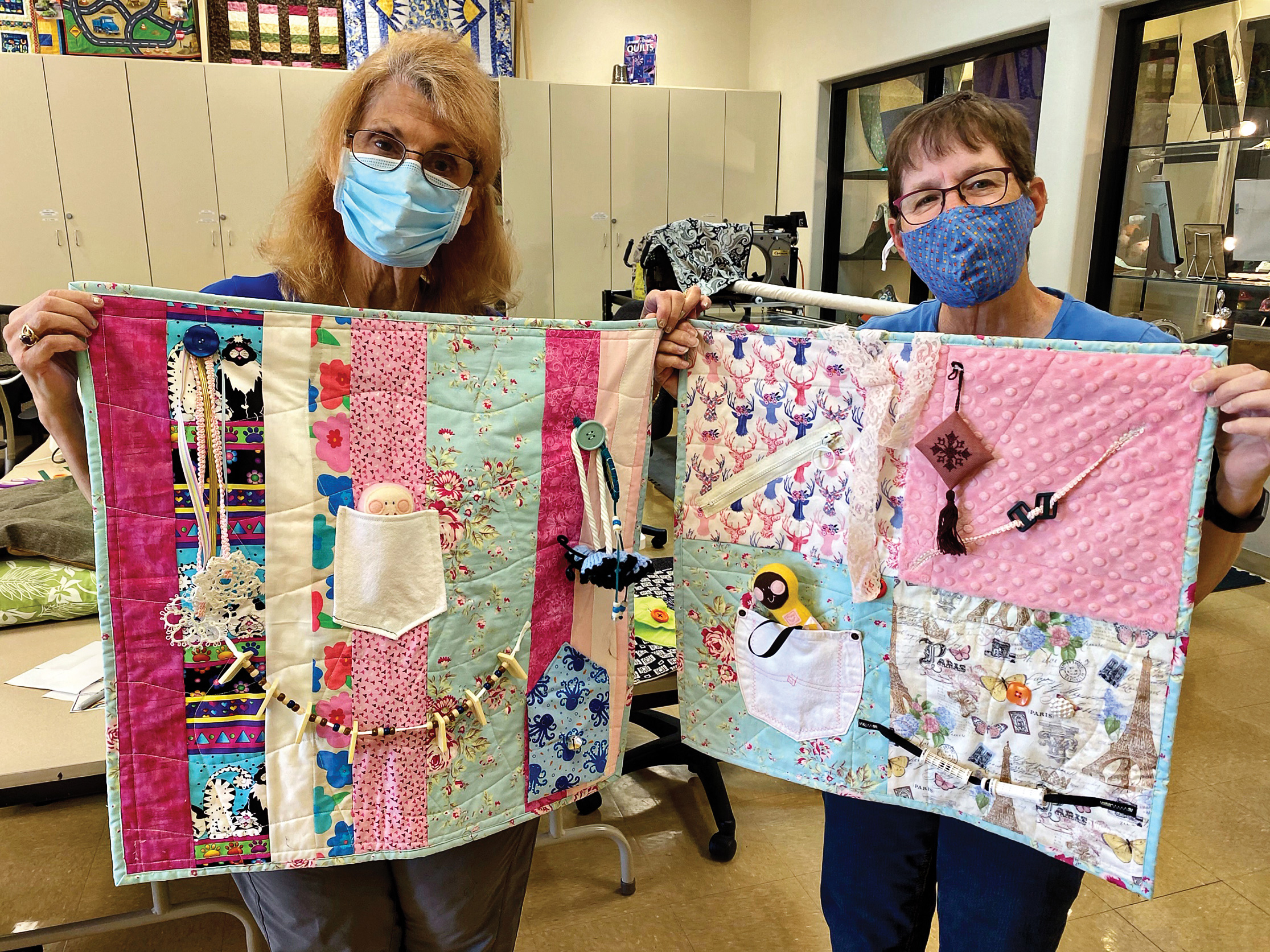

Front row (left to right): Linda Rowe, Joan Grube, Jan Ochterbecki; back row: Judy Frank, Nadine Eders, Diane Rottman, Lynne Hupp, and Maura Weddle
Linda Rowe
People with dementia, or in hospice with dementia, spend many hours sitting or lying down. They may be bored, anxious, unable to interpret their environment accurately, or unable to recognize family members. In addition, when people with dementia become agitated, it can be extremely difficult for family members to see their loved ones in distress. Agitated behaviors can include aggressive behavior, physically non-aggressive behavior, or verbal agitation. Family members often are concerned that medications to reduce agitation do not promote a quality of life by just sedating them.
Treatment of dementia, or those experiencing end-of-life transition, can benefit from sensory interventions as one alternative to reduce agitation. By engaging with their environment via stimulating objects, in terms of familiar colors, textures, sounds, and even smells, they can recall memories. This can provide a sense of calm. While people may lose short-term or recent memories, the older memories often remain.
When Hospice of the Valley put in a request for sensory mats, the quilters went to work. There was no end to the creativity. One group of quilters assembled the basic quilts using a variety of colors suitable for men and women. Other members embellished the mats with all kinds of household items, such as empty thread spools, zippers, ribbons, buttons, lace, fringe, Velcro, and even bells. Anything a person could feel, move, and listen to was added. After a day of sewing, the group completed nearly 40 fidget blankets.
If you want to see these in person, they will be on display at the Creative Arts Center in April.
